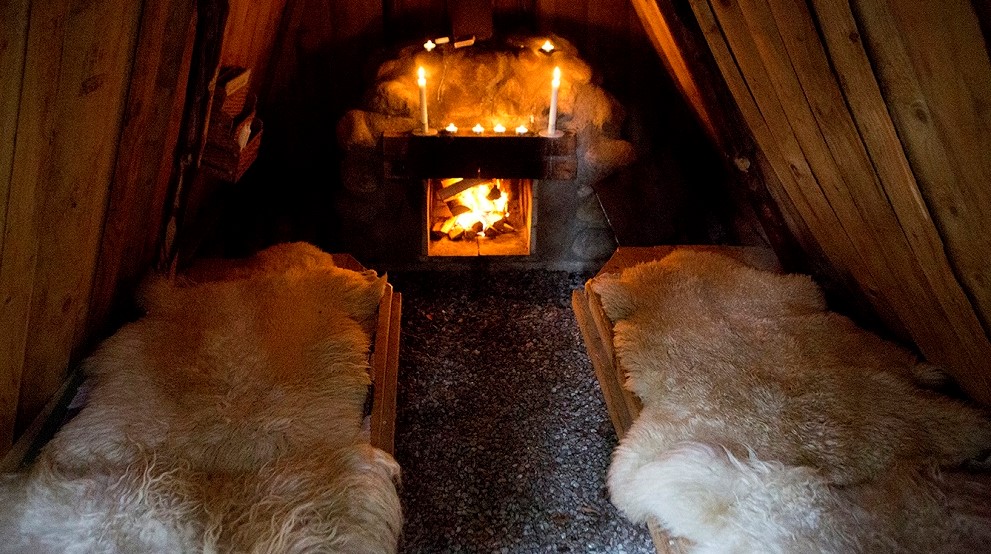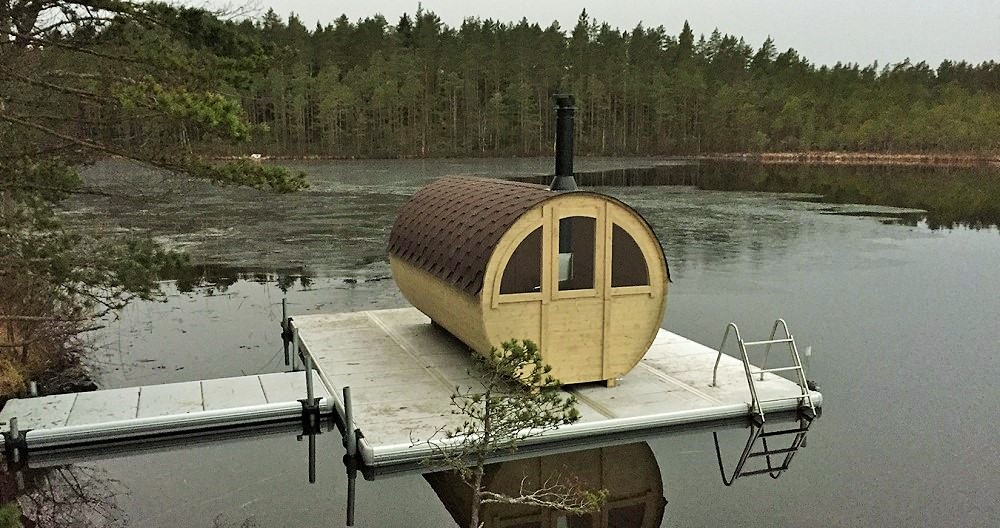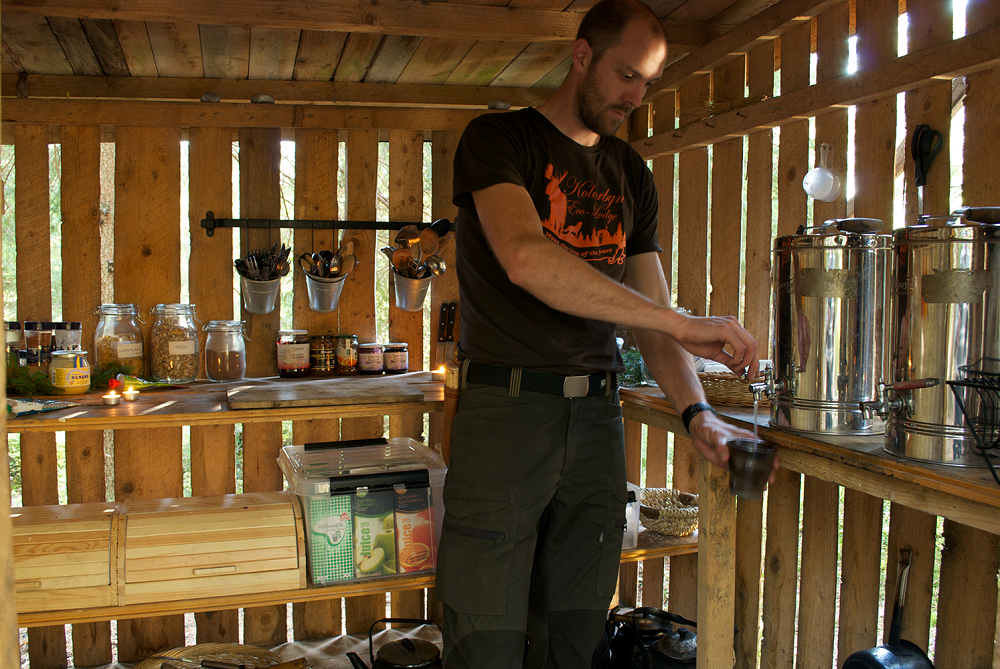Posted in Accommodation, Blog, Ecotourism, Europe, Responsible travel, Sweden, Wildlife Tags: Christmas in Europe, eco-lodge, Kolarbyn, Kolarbyn Eco-lodge, Sweden
Discover Your Wild Side at Kolarbyn Eco-lodge, Sweden
Sweden’s most primitive hotel – Kolarbyn Eco-lodge – gives ‘roughing it’ a whole new meaning. Hidden in the heart of a spruce forest, this unique eco escape offers guests a wild hotel experience without all the trimmings.
Nestled in between the tall, slim evergreens on the shore of Lake Skärsjön are twelve grass-rooved wooden huts, their rustic design blending beautifully with the surrounds. Inside there is just enough space for two people, with two beds to either side of the hut, or two beds side-by-side. A sheepskin offers a warm lining for your sleeping bag, which you either bring with you or Kolarbyn can provide.

Staying at Kolarbyn
Each hut has its own fireplace, although don’t expect a fire to be ready and roaring on arrival – guests are required to chop their own firewood during their stay. Think of it as fancy bush camping without the canvas.
There is no running water or electricity at Kolarbyn. You’re totally off the grid here. On arrival at the accommodation, you will get a quick tour before being tutored on survival skills such as cutting wood, lighting the fire and where to fetch water for drinking and cooking.

While Kolarbyn is a completely self-service affair, they do provide a kitchen pantry from which you can choose your ingredients for each meal. There are several barbecue areas for cooking, along with pots, pans, kettles and all the cooking utensils you should need.
History of the huts
Kolarbyn was originally used as a site for charcoal burning by locals; a practice which continued for 400 years. The workers built small wooden huts to use as shelter in the winter months, several of which have stood on this current site over many generations.

In 1996, local villagers from Skinnskatteberg built a collection of huts on the same site, keen to recreate a similar setting their ancestors would have worked in for those interested in practicing traditional charcoal burning techniques. Today, there is no charcoal burning at Kolarbyn. It is simply a place to stay and explore.
It is a natural place, a refuge for silence, a place to gather your thoughts and let your wild side free.
Things to do
If you decide to hang your hat in the middle of a forest at the edge of a lake, the number one thing to do is to sit back and enjoy the silence. Do absolutely nothing for a while and enjoy the digital detox. No one can reach you out here.
For those keen to explore the surrounds, there are a number of activities on offer including a self-guided hike along a local walking trail, an overnight mindfulness hiking tour or a moose safari, where you set out to find local moose – no shooting involved.

When to visit
The best time to visit Kolarbyn is from April through September. During these months, the climate is warm enough to enjoy a range of outdoor activities: swimming or fishing in the nearby lake, going on a moose or beaver safari, berry picking or horse riding.
What is the essence of Kolarbyn?
“To live in nature. It is just a really, really magical feeling to wake up in the morning, start the fire and hear the birds singing. It is just to be in this place. And that’s enough for many people. They don’t want to have our tours, they just want to be here.” Andreas Ahlsén, Kolarbyn Manager
For more information on how to find Kolarbyn and what to pack for your stay, visit Kolarbyn’s website.
Note: a portion of the profits from Kolarbyn goes directly to conservation of nature and cultural values. Kolarbyn is open for the winter season (1 November to 30 April) as well; but closed between the dates 28 November and 8 January.
LINDA MCCORMICK
Linda McCormick is a freelance journalist and travel writer living in Melbourne. Originally from Northern Ireland, Linda’s obsession with travel started at a young age when she set off in search of a warmer place to call home. While travelling she became more aware of the negative impacts of globetrotting and the importance of sustainable and responsible travel. She now travels with a different attitude and shares her passion for the natural world and eco travel in her writing. Linda’s work is published in a number of leading magazines, papers and websites, and on her own travel blog: www.EcoTravellerGuide.com
Join us on Our Planet Travel’s eco adventure:
www.facebook.com/OurPlanetTravel
www.Instagram.com/OurPlanetTravel
www.twitter.com/OurPlanetTravel







